Government hierarchy
Administrative hierarchy of the government system
The administrative hierarchy is quite complicated. The introduction to the government structure provided earlier attempted to explain the hierarchical ranking of those government departments. However, in some cases, it is very difficult for anyone to determine a ranking simply by looking at the position of an organization in the government structure, as some higher- ranking officials take positions in lower ranking organizations. To generalize, those ministries, commissions and administrations that constitute the main body of the State Council are at the ministerial level as shown in Fig.1.5.1.
Those bureaux, commissions, administrations and institutions that are under the supervision of the State Council are generally understood to be sub- or semi- ministerial level organizations.
Typical structure of a ministry
The management body of a ministry usually consists of a minister, several vice-ministers and assistant ministers. Under the ministry there are departments, under which there are divisions (see Figure 1.5.2). Normally, the divisions are the place where the first point of contact with the ministry starts. Parallel with the departments, there are in some cases also industry associations and other institutions such as information centres or research institutes, which are relatively independent in terms of operation, but organizationally affiliated .

Figure 1.5.1: Ministries, Commissions and Administrations that constitute the main body of the State Council
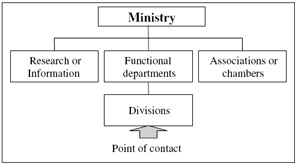
Figure 1.5.2: Departments within the Ministry
Before the government reforms , the ministries were responsible for business corporations and large state- owned enterprises , which are now independent as a result of the government reform in separating government functions from enterprise management.
Provincial level governments
The local governments that are immediately under the central government are provincial-level governments. China now has on its mainland 22 provinces , five autonomous regions and four municipalities under state jurisdiction. All the governments in those 31 locations are provincial level governments. The heads of those provincial stations are officials of ministerial level.
Provincial governments must accept the unified leadership of the State Council, which has the power to decide on the division of responsibilities between the central government and provincial administrative organs. The State Council also has the power to annul inappropriate decisions and orders of provincial governments. At the same time, provincial governments implement local laws, regulations and decisions of the provincial people's congresses and their standing committees, and are responsible to and report to those congresses and their standing committees. Provincial people's congresses and their standing committees have the power to supervise the work, change and annul inappropriate decisions of the provincial governments.
The structure of a provincial government resembles that of the central government. Under a provincial government, there are similar set-ups that correspond to the ministries and commissions at the central level. For example, there are provincial development planning commissions, bureaux of finance, bureaux of foreign trade and economic co-operation, bureaux of education, drug administration, etc., that correspond to the State Development Planning Commission, the Ministry of Finance, the Ministry of Foreign Trade and Economic Co-operation, the Ministry of Education, State Drug Administration, etc. The heads of the local bureaux, commissions, administrations, etc. are appointed by and are responsible to the provincial governments, while at the same time executing the policies made both by the provincial governments and the central ministries. A typical reporting structure is described in Figure 1.5.3.
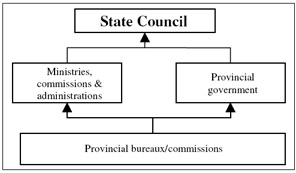
Figure 1.5.3: A typical reporting structure
Lower level governments
Chinese cities vary not only in size , but also in official ranking. Some provincial capitals and cities of key economic importance have different administrative status and a certain level of independence from the provinces where they are located. There are 15 cities that are called 'separately planned cities', which means that such cities have independent administrative status and are singled out to enjoy quasi-provincial status in national planning. In terms of reporting routes, the government functions such as bureaux, commissions and administration in these cities do not report to the corresponding provincial departments, but to those at the central level. The heads of those governments are referred to as vice-ministerial officials. Such cities include Shenyang, Dalian, Changchun, Harbin, Jinan, Qingdao, Nanjing, Ningbo, Hangzhou, Xiamen, Wuhan, Guangzhou, Shenzhen, Xian and Chengdu. Their reporting structure in relation to the central government is very much the same as described in Figure 1.5.3.
Most of the other cities such as prefectural cities are under the jurisdiction of the provincial government. To understand the reporting structure of such cities, it is important to clarify the position of a prefectural city in the administrative structure of a typical province (see Figure 1.5.4).
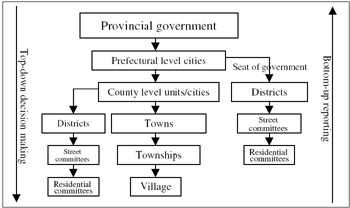
Figure 1.5.4: Administrative structure for a typical province
The reporting structure of a prefectural city and the county-level cities under a prefectural city is depicted in Figure 1.5.5.
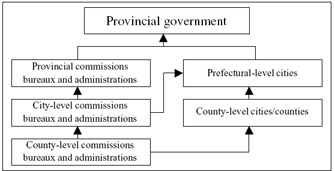
Figure 1.5.5: Reporting structure of a prefectural city
In terms of official ranking, the head of a prefectural city is equivalent to the heads of provincial bureaux, commissions and administrations; all are known as director- general level officials. The existing prefectural level cities are largely the heritage of the old administrative system of China. It is not a rigid hierarchical ladder now, because county-level cities can be promoted to prefectural level cities if the following criteria are met:
-
over a quarter of a million non-farming population in total, with the place of a government seat having a population over 200,000;
-
total industrial and agricultural output value at 1990 constant prices exceeding 3 billion renminbi, of which 80 per cent should be industrial output value;
-
GDP over 2.5 billion renminbi;
-
the share of the output value of tertiary industry at not less than 35 per cent of GDP and surpassing that of primary industry;
-
annual budgetary fiscal revenue in excess of 200 million renminbi;
-
the city becoming a centre of the neighbouring areas.
Official ranking
Official ranking is an important part of China's administrative hierarchy. There is a saying that 'the person in charge is more helpful than the person who supervises', which means that a person with no official ranking can be very important in handling government relations. Nevertheless, a better knowledge of the official may help you to understand the roles that the officials you are dealing with play in the decision making process. Figure 1.5.6 provides a comparison of the official rankings in different government structures.
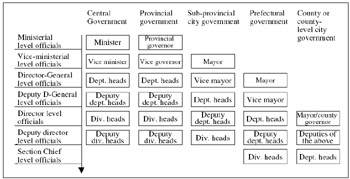
Figure 1.5.6: Comparison of the official rankings in different government structures
As a result of the government effort to separate government functions from enterprise management, government at all levels are not supposed to be involved in business activities. The government reform effort has also removed the official rankings associated with the management of state-owned enterprises. Enterprises are mostly using corporate titles now with no implications of official ranking.
EAN: 2147483647
Pages: 648